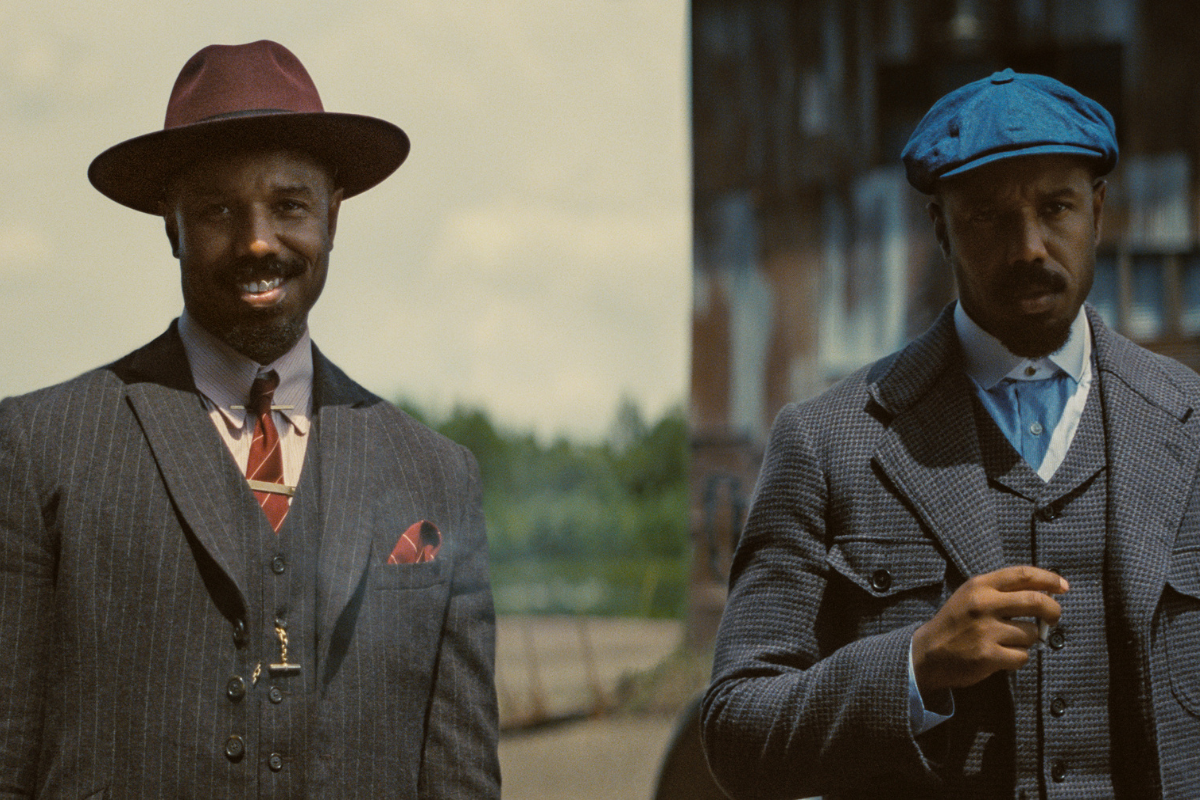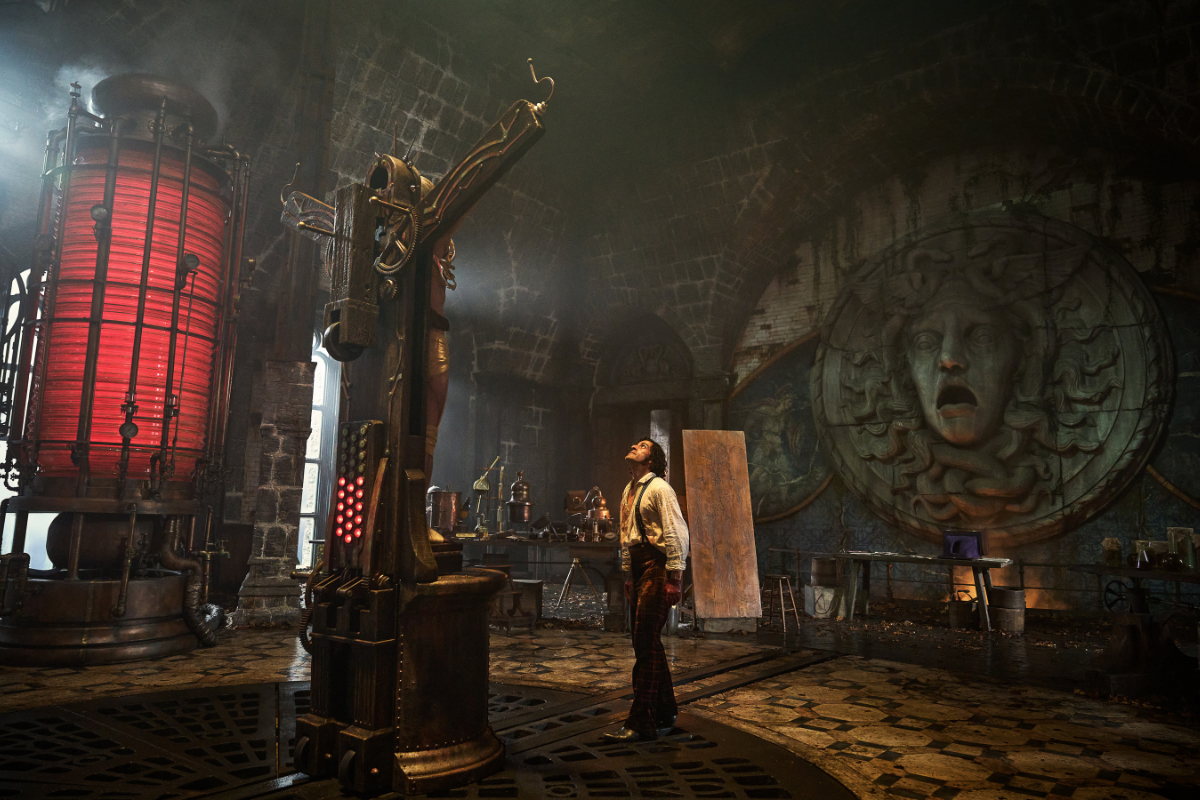Hitler, Napoleon, Dinosaurs: Writing Your Historical Characters as Fictional Ones
Once we make a historical character a part of our story – we own that character. It’s our character now, and we can do whatever we want with that character, for the sake of telling the best story we possibly can.
I’ve long been fascinated with the ending of Inglourious Basterds.
You know, the whole situation of Hitler and Goebbels being shot dead by a couple of Jewish commandos in 1944, and the WWII ending presumably immediately afterward.
That, and also a no-small-matter of Colonel Hans Landa, assumed to be a loyal Nazi, and suddenly revealed to be an opportunist, in it for himself, easily switching his alliance and, despite being perfectly immoral, becoming a temporary ally to the collective protagonists, and assuming a role crucial in ending WWII.
For the record, unlike many rabid Quentin Tarantino fans, I don’t consider that movie a masterpiece; I find large chunks of it boring, and its characters, while spectacular on the surface, are lacking depth, and the acting is often uneven. The movie has its moments – some of the comedic scenes are genuinely funny, and the giant face projected onto the burning screen is an unforgettable visual – but overall, I’d consider it among the weakest stories Tarantino ever told on screen.
And yet – there was something about that ending that hinted at genius.
Critics and fans were quick to identify the ending (and by implication, the entire story) as “alternate history”.
I think such identification is a mistake. I almost feel as though assigning that “alternate reality” category to Inglourious Basterds was a defensive knee-jerk reaction against something so outside the ordinary, it was a little scary. It’s as if the audiences rushed to slap the “alternate reality” label onto the story so they can stop being disturbed by the terrifying intellectual and creative freedom of that ending, and regain their peace of mind. A label saves us from obsessive thinking.
No. I disagree, It’s not “alternate history”; there’s something else entirely going on here.
Judge for yourself: A typical work in the “alternate history” genre, at least the way it’s traditionally understood, is based on a concept, in which one known historical fact has been changed – and that change is at the very core of the concept, and represents the key obligatory condition for the existence of the entire story world.
For example, the Amazon TV series The Man in the High Castle, created by Frank Spotnitz, and based on the novel by Philip K. Dick, starts out with the notion that, contrary to the world we know today, the story takes place in the alternate world in which the Nazi Germany and the Imperial Japan triumphed in the WWII. That’s the initial setting, the pre-existing condition and the core of the story concept.
Peter Sohn’s animated movie The Good Dinosaur, produced by Pixar from the script by Meg LeFauve is based on the concept that the asteroid that was supposed to wipe out dinosaurs somehow missed Earth, and so, the dinosaurs survived, thrived, and eventually evolved into thinking beings who somehow ended up existing in our world alongside wild primal humans. Again, the single changed fact is the obligatory initial condition for the entire story world.
Do you see the similarity in pattern between these two example stories?
Do you recognize a quite different pattern that is at work in Inglourious Basterds?
The “alternate history” stories are restricted quite rigidly by their premise: Once the premise is locked in, it’s somewhat inescapable; the world of the story is set, and the rest of the story operates based on clear, predictable rules. (The Man in the High Castle is an interesting exception, but I’m not going to spoil it for you.)
Inglourious Basterds is markedly different: The historical reality of WWII in that film is not treated as a set of firm rules to obey (with just one significant fact altered as a thought experiment), but used instead almost like a jazz standard, around which the genius virtuoso blasts out a crazy improvisation, as far removed from the “main melody” as possible. Inglourious Basterds is not trying to be a historical movie, nor does it claim to be – it’s a “comic book on film” using WWII as a material for its yarn whose main and only purpose is – fun.
To understand what we’re really dealing with, let’s consider any big serious work of historical military fiction storytelling that places fictional characters into historic settings, and lets these fictional characters “mingle” with historic ones.
Let’s look at War and Peace, by Leo Tolstoy, set before and during Napoleon Bonaparte's failed invasion of Russia in 1812. Looking at this work would be bitterly ironic and paradoxically timely, considering the world we live in today.
In that classic novel, its fictional characters, such as Natasha Rostova or Pierre Bezukhov, have almost complete freedom to do whatever they want, and whatever the author wants them to do – as long as they don’t step out of what’s plausible.
Natasha can enjoy social life, flirt with, fall in love with, and be married to any Russian nobleman she wants (and she has her pick). However, she cannot become a prominent scientist or a doctor, because even noblewomen of that time in Russian society were restricted in their rights and their ability for growth and self-expression.
Pierre can ask anybody’s hands in marriage, be tormented by any profound moral dilemmas, dance and get drunk at any high society party he wants, fight in duels, take part in guerilla warfare, and overall live in whatever way he damn pleases.
Not unlike the Grand Duke of Gerolstein, aka Rodolph, from Eugène Sue’s great 1843 adventure novel The Mysteries of Paris, Pierre Bezukhov has enough flexibility as a fictional character to traverse his social class and rub shoulders with simple folks.
All of this is possible because Pierre is a fictional character; as such, he is only limited by what’s plausible for his character’s social class and personality type. He’s not limited by any commonly known historical fact.
However, the moment Pierre begins to plan the assassination of Napoleon, we know that his attempts are doomed – try hard as he might, and as determined as he is, he will fail to kill the invading French Emperor.
Why?
Because:
a) Tolstoy was a serious, mature, realistic writer and thinker, not an entertainer. His job was to help his mature, deep-thinking, ethically conscious, over-educated Russian readers connect to their historic roots in the moral perspective;
b) Tolstoy wrote about the historic events that were relatively recent to him. He finished the novel in 1867, and it dealt with the invasion that took place only half a century before. He actually met and interviewed some of the elderly veterans of the Napoleonic wars as part of his research process.
c) There’s a crucial difference between Pierre Bezukhov and Napoleon Bonaparte: Pierre is a fully fictional character, whereas Napoleon is a real-life historical figure in a literary work that plants bits and pieces of fiction within a strict non-fictional historical framework. In other words, Pierre is free to do whatever he damn pleases in his story, but Napoleon is stuck with being the historic Napoleon.
Napoleon in War and Peace can’t be assassinated in Moscow in 1812, because he is treated like a serious, realistic historical character, and because every reader in Tolstoy’s time, and Tolstoy himself knew perfectly well, and without checking any sources, that Napoleon died in Longwood, Saint Helena, in 1821.
If Tolstoy allowed Pierre to finish the job of assassinating Napoleon in War and Peace, the author would be publicly laughed at, and his career as a serious writer would be instantly over.
Needless to say, in Tolstoy’s novel, Pierre comes *that* close to killing Napoleon, but at the last moment, he sees two French soldiers assaulting an Armenian family, steps in to intervene, and is captured by the French – which sends the story into a morally rich and fascinating new direction.
Compared to War and Peace, something of quite different nature happens in the 2000 Ridley Scott’s movie Gladiator, based on a script written by David Franzoni and John Logan, and subsequently overhauled and reupholstered by William Nicholson.
Here, we have a factual Roman emperor Commodus, who, as is historically known, was fond of gladiator battles and took part in actual fights, somehow winning every one of them (likely because the fights were “rigged”). Known for being corrupt and vindictive, and hated by the Roman politicians, Commodus was eventually assassinated in a bath by his wrestling partner, a slave named Narcissus. This assassination happened fifteen years into the emperor’s reign, at which point he was succeeded by the next Roman emperor, who was promptly assassinated in his own turn, and replaced by the next after next one.
In the movie Gladiator, however, Commodus is killed not in a bath, relatively late into his tyrant career – but shortly after the beginning of his reign, in a fight against a perfectly fictional former Roman general turned gladiator, Maximus. Moreover, after Commodus’ death, Rome supposedly becomes a republic again (which never happened in real life)!
Do you see the clear similarities between this, and what Quentin Tarantino did in Inglourious Basterds?
So, is Gladiator an alternate history story? Not really. Just a heavily fictionalized, dramatized retelling of historical events, seen by most viewers as a perfectly forgivable collection of minor historical inaccuracies of this highly entertaining motion picture.
How come?
First of all, because it’s a much less highbrow and much more entertaining story than something a writer of Leo Tolstoy caliber would compose.
But, more importantly, also because the details of Roman history are not as widely known to the contemporary moviegoing public, the events are not recent, and the audience is not going to reject the historically inaccurate plot on the basis of knowing the facts that would contradict the plot.
Most of the audience members haven’t heard of emperor Commodus before they watched Gladiator, they had no historical frame of reference and no knowledge of Commodus’ biographical facts, no reason to assume that the writers are not telling the story close to historical facts – and they didn’t even care how closely those ancient facts were followed by the storytellers. All they wanted was – to be entertained. (And if you remember the movie, you know what I did there.)
So, in War and Peace, Leo Tolstoy worked hard to treat Napoleon as a historical character, and to limit the events that involved Napoleon strictly to what wouldn’t contradict known history.
Whereas in Gladiator, the writers treated the historical character Commodus as if he were a perfectly fictional character – as fictional as the gladiator Maximus, and therefore, not strictly limited by historical facts, and capable of dying in any fashion dictated by the needs of drama and entertainment.
And why not? Think of this: A character is not a human being. A character is an aspect of your theme, a collection of attitudes. It’s a phantom, an illusion, an artful construct disguised to resemble a human being and to deceive the audience into temporarily believing they are viewing the actual human behavior.
Commodus the character is not Commodus the man. Commodus in Gladiator is not really a historical person – once he’s in the story as a part of the story, he is as fictional as any made-up character in Gladiator or in any other work of fiction!
And here we come full circle and get back to Inglourious Basterds.
In that movie, Quentin Tarantino treated Hitler and Goebbels in exactly the same way as Ridley Scott treated Commodus. He allowed these bad guys to die sooner than they did in historical reality, and by the hands of the avenging good guys, rather than by suicide, as it happened in real life.
The moment Quentin Tarantino planted Hitler as a character in his story, he owned Hitler and became the almighty God who could do to Hitler anything he wanted. The writer-director simply treated the historical monster as a perfectly fictional character – just the same way as he treated the fictional Colonel Hans Landa or 1st Lieutenant Aldo Raine.
That’s the actual explanation of how that ending was achieved.
This is not an “alternate reality” by any means. Nothing of the sort!
The actual technique Tarantino used is very different:
Treating a historical character freely, like a fictional one.
Quentin Tarantino himself, in an interview, described finding that ending as a lucky creative accident, rather than a result of a deliberate application of a known brainstorming method.
Much like a naturally gifted intuitive fighter in a wild street fight may accidentally apply a perfect judo throw to resist an aggressive opponent, without ever having been trained in judo – Tarantino, thanks to his fine-tuned creative intuition, found his crazy solution intuitively. That’s how his talent works! However, the fact that he didn’t identify the method he used doesn’t mean that there’s no pattern or technique behind his lucky eureka moment.
We can reverse-engineer what he did and use his technique whenever we find it creatively appropriate!
Treating historical characters as fictional ones can yield us a different “flavor” of freedom, compared to what’s normally thought of as “alternate reality”.
Once we make a historical character a part of our story – we own that character. It’s our character now, and we can do whatever we want with that character, for the sake of telling the best story we possibly can.
Similarly, once the historical events become a part of our story – they are ours to change in any way we please. We can end WWII early and make a nasty unprincipled bad guy instrumental in saving millions of people.
We can do whatever we want: Any limits are illusory.
There’s more to it!
We can trick our audience into believing that we play by a certain set of rules, for example, that we would stick with the historic facts – but all this time, we’re secretly capable of much greater freedom – and when we reveal the true extent of our creative freedom in contrast to what the audience considered to be our creative limit – the audience will be shocked and astonished, and think of us as geniuses.
The most wonderful part is that we do not even tell our audience that we’re playing by a stricter set of rules than we actually are.
The audience will make a natural assumption about it. There’s no reason for them to believe that we’re going to do something outside of the ordinary to a historical character or historical event.
But we always can.
Learn more about the craft and business of screenwriting from our Script University courses!
Dimitri Vorontzov is a scholar of storytelling, with primary focus on stories for film and television. Educated as a composer, pianist, symphony conductor and a film director, Vorontzov trains screenwriters, conducts screenwriting contests, helps established writers and producers with screenplay rewrites and film/TV project development, and leads a worldwide community "Superstar Screenwriters", uniting tens of thousands of people passionate about screenwriting and filmmaking, who live everywhere on the planet: From the US to Japan and from Kenya to Nepal. Free screenwriting resources available on his website.







